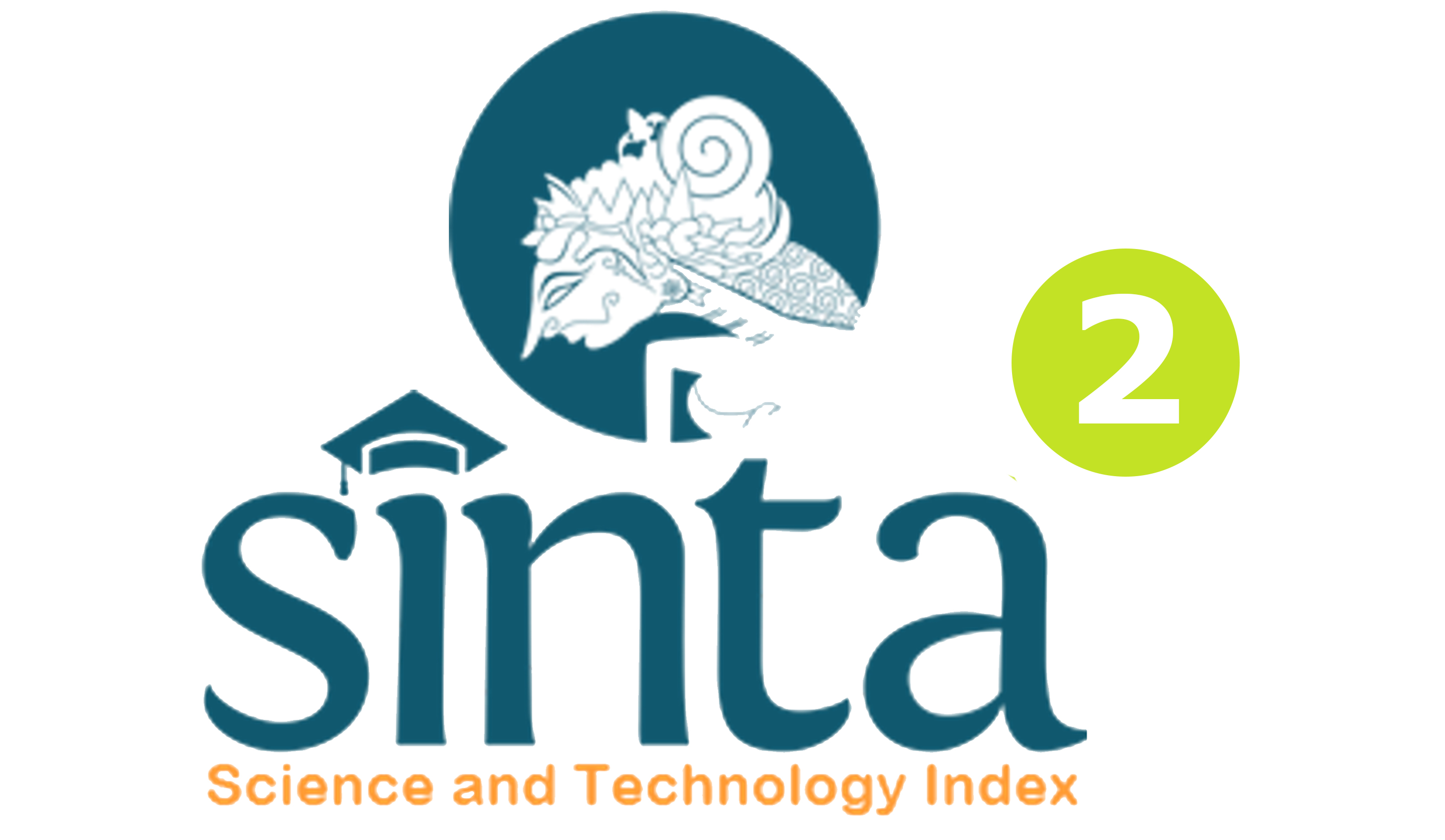Mapping Student Character Education on Biotechnology Material
DOI:
https://doi.org/10.23887/ivcej.v6i2.56084Keywords:
Character education, technology, instruments, surveysAbstract
Student character education is very important in facing the challenges of the 21st century. This research aims to determine the level of student character education. Therefore, this research aims to analyze student character education in ninth-grade students. The methodology in this research uses a survey method involving 75 students who were taken at random (randomly). The instrument used was character education questions distributed via Google Forms. The data obtained was analyzed using the Statistical Program for Social Science (SPSS) application. Based on the survey results, it is known that the number of subjects consisted of 43 women and 32 men. and consisted of 4 tribes, namely Malay, Minang, Batak, and Javanese. Based on the survey results, it is also known that the average student's character education ability is in a good category with a score of 7.4, which can be explained in detail in 4 constructs, namely religious, honest, disciplined, creative, democratic, curious, caring for the environment, social caring and responsibility. In conclusion, the construct with the highest average value is environmental care and responsibility and originality with the same average value, namely 8.0, and the lowest is democracy and creativity, namely 7.2. The recommendation from this research is that the development of student character education still needs to be improved, and teachers can use the instruments used.
References
Adesita, D., Rofian, R., & Rahmawati, I. (2019). Persepsi Orang Tua Siswa Kelas IV Terhadap Pentingnya Pembentukan Karakter Peduli Sosial. Indonesian Values and Character Education Journal, 2(2), 61. https://doi.org/10.23887/ivcej.v2i2.19435. DOI: https://doi.org/10.23887/ivcej.v2i2.19435
Ahmad, N. J., Yakob, N., Bunyamin, M. A. H., Winarno, N., & Akmal, W. H. (2021). The effect of interactive computer animation and simulation on students’ achievement and motivation in learning electrochemistry. Jurnal Pendidikan IPA Indonesia, 10(3), 311–324. https://doi.org/10.15294/JPII.V10I3.26013. DOI: https://doi.org/10.15294/jpii.v10i3.26013
Amin, S., Sumarmi, Bachri, S., Susilo, S., Mkumbachi, R. L., & Ghozi, A. (2022). Improving Environmental Sensitivity Through Problem-Based Hybrid Learning (Pbhl): an Experimental Study. Jurnal Pendidikan IPA Indonesia, 11(3), 387–398. https://doi.org/10.15294/jpii.v11i3.38071. DOI: https://doi.org/10.15294/jpii.v11i3.38071
Ammade, S., Rahman, A. W., & Syawal, S. (2022). Challenges and adaptation on online learning during COVID-19 pandemic. Journal of Education and Learning (EduLearn), 16(3), 342–349. https://doi.org/10.11591/edulearn.v16i3.20529. DOI: https://doi.org/10.11591/edulearn.v16i3.20529
Apriyanti, N., Razak, R. A., Rahim, S. S. A., Shaharom, M. S. N., & Baharuldin, Z. (2020). Infographic instructional media as a solution and innovation in physics learning for senior high school students in Indonesia. International Journal of Information and Education Technology, 10(10), 773–780. https://doi.org/10.18178/ijiet.2020.10.10.1457. DOI: https://doi.org/10.18178/ijiet.2020.10.10.1457
Ardika, N. P., Agustiana, I. G. A. T., & Dibia, I. K. (2022). Character and Learning Outcomes of Civics in VCT Learning Assisted by Audio Visual Media. Indonesian Values and Character Education Journal, 5(1), 19–31. https://doi.org/10.23887/ivcej.v5i1.44226. DOI: https://doi.org/10.23887/ivcej.v5i1.44226
Bakri, A. R., Sutrisno, S., & Mushafanah, Q. (2021). Nilai Karakter Siswa pada Kegiatan Ekstrakurikuler. Indonesian Values and Character Education Journal, 4(1), 1–6. https://doi.org/10.23887/ivcej.v4i1.29811. DOI: https://doi.org/10.23887/ivcej.v4i1.29811
Braun, V., Clarke, V., Boulton, E., Davey, L., & McEvoy, C. (2021). The online survey as a qualitative research tool. International Journal of Social Research Methodology, 24(6), 641–654. https://doi.org/10.1080/13645579.2020.1805550. DOI: https://doi.org/10.1080/13645579.2020.1805550
Citra Ningrum, C. H., Fajriyah, K., & Budiman, M. A. (2019). Pembentukan Karakter Rasa Ingin Tahu Melalui Kegiatan Literasi. Indonesian Values and Character Education Journal, 2(2), 69. https://doi.org/10.23887/ivcej.v2i2.19436. DOI: https://doi.org/10.23887/ivcej.v2i2.19436
Desnita, Festiyed, Marsa, P. B., Novisya, D., & Hamida, S. (2021). Development of instruments to measuring feasibility of context-based videos of sound. In Journal of Physics: Conference Series (Vol. 1816, Issue 1). https://doi.org/10.1088/1742-6596/1816/1/012033. DOI: https://doi.org/10.1088/1742-6596/1816/1/012033
Dewi, N. R., Rusilowati, A., Saptono, S., & Haryani, S. (2022). Project-Based Scaffolding Tpack Model To Improve Learning Design Ability and Tpack of Pre-Service Science Teacher. Jurnal Pendidikan IPA Indonesia, 11(3), 420–432. https://doi.org/10.15294/jpii.v11i3.38566. DOI: https://doi.org/10.15294/jpii.v11i3.38566
Ferreira, A. P., Coelho, K. R., Schlosser, T. C. M., Poveda, V. de B., & Silva, L. de L. T. (2022). Construction and validation of a booklet of perioperative orientation and patient safety. In Revista gaucha de enfermagem (Vol. 43, p. e20210175). https://doi.org/10.1590/1983-1447.2022.20210175.en. DOI: https://doi.org/10.1590/1983-1447.2022.20210175.en
Fikri, M. & T. I. . (2022). The Impact Of Social Skills Training On The Ability To Cooperate In Early Childhood. Indonesian Values And Character Education Journal, 1(5), 32–41. https://doi.org/10.23887/ivcej.v5i1.44227. DOI: https://doi.org/10.23887/ivcej.v5i1.44227
Funa, A. A., Gabay, R. A. E., & Ricafort, J. D. (2021). Gamification in Genetics: Effects of Gamified Instructional Materials on the Stem Students’ Intrinsic Motivation. Jurnal Pendidikan IPA Indonesia, 10(4), 462–473. https://doi.org/10.15294/jpii.v10i4.32143. DOI: https://doi.org/10.15294/jpii.v10i4.32143
Ghosh, K., Yue, C. Y., Sk, M. M., Jena, R. K., & Bi, S. (2018). Development of a 3D graphene aerogel and 3D porous graphene/MnO 2 @polyaniline hybrid film for all-solid-state flexible asymmetric supercapacitors. Sustainable Energy and Fuels, 2(1), 280–293. https://doi.org/10.1039/c7se00433h. DOI: https://doi.org/10.1039/C7SE00433H
Göçen Kabaran, G., & Altıntaş, S. (2022). Effectiveness of the project writing training developed for pre-service primary teachers. Journal of Education and Learning (EduLearn), 16(3), 308–317. https://doi.org/10.11591/edulearn.v16i3.20519. DOI: https://doi.org/10.11591/edulearn.v16i3.20519
Godfrey, A., Hetherington, V., Shum, H., Bonato, P., Lovell, N. H., & Stuart, S. (2018). From A to Z: Wearable technology explained. In Maturitas (Vol. 113, pp. 40–47). https://doi.org/10.1016/j.maturitas.2018.04.012. DOI: https://doi.org/10.1016/j.maturitas.2018.04.012
Halim, L., & Mokhtar, L. E. (2015). Critical Thinking Process in Science Learning. Prosiding Seminar Nasional Pendidikan Sains, 1–4. https://jurnal.fkip.uns.ac.id/index.php/snps/article/view/7900.
Hartati, W. (2017). Implementasi Pendidikan Karakter Disiplin di SD Negeri 7 Tanjung Raja. Jurnal Manajemen, Kepemimpinan, Dan Supervisi Pendidikan, 2, 233–255. https://doi.org/10.31851/jmksp.v2i2.1470. DOI: https://doi.org/10.31851/jmksp.v2i2.1470
Hartayani, N. N. P., & Wulandari, I. G. A. A. (2022). Improving the Creative Character of Elementary School Students Through Tri Hita Karana Habituation. Indonesian Values and Character Education Journal, 5(2), 67–76. https://doi.org/10.23887/ivcej.v5i2.49938. DOI: https://doi.org/10.23887/ivcej.v5i2.49938
Heo, M., Kim, N., & Faith, M. S. (2015). Statistical Power As A Function of Cronbach Alpha of Instrument Questionnaire Items Data Analysis, Statistics and Modelling. BMC Medical Research Methodology, 15(1), 1–9. https://doi.org/10.1186/s12874-015-0070-6. DOI: https://doi.org/10.1186/s12874-015-0070-6
Kesumaningsari, N. P. A., Pudjibudojo, J. K., & Louk, M. H. L. (2022). Teaching experience on online learning in higher education: Generational analysis. Journal of Education and Learning (EduLearn), 16(3), 318–329. https://doi.org/10.11591/edulearn.v16i3.20508. DOI: https://doi.org/10.11591/edulearn.v16i3.20508
Lei, J. H., Guo, Y. J., Chen, Z., Qiu, Y. Y., Gong, G. Z., & He, Y. (2017). Problem/case-based learning with competition introduced in severe infection education: an exploratory study. SpringerPlus, 5(1). https://doi.org/10.1186/s40064-016-3532-3. DOI: https://doi.org/10.1186/s40064-016-3532-3
Leite, S. de S., Áfio, A. C. E., Carvalho, L. V. de, Silva, J. M. da, Almeida, P. C. de, & Pagliuca, L. M. F. (2018). Construction and validation of an Educational Content Validation Instrument in Health. Revista Brasileira de Enfermagem, 71, 1635–1641. https://doi.org/10.1590/0034-7167-2017-0648. DOI: https://doi.org/10.1590/0034-7167-2017-0648
Martin, Y. A., Ysh, A. Y. S., & Listyarini, I. (2020). Analisis Nilai Karakter Pada Lirik Lagu Dalam Buku Lagu-Lagu Pilihan Ismail Marzuk. Indonesian Values and Character Education, 3(2), 54–59. https://doi.org/10.23887/ivcej.v3i2.29243. DOI: https://doi.org/10.23887/ivcej.v3i2.29243
Mohammadi, M., Abbasian, G.-R., & Siyyari, M. (2022). Adaptation and validation of a critical thinking scale to measure the 3D critical thinking ability of EFL readers. Language Testing in Asia, 12(1). https://doi.org/10.1186/s40468-022-00173-6. DOI: https://doi.org/10.1186/s40468-022-00173-6
Ngang, T. K., Nair, S., & Prachak, B. (2014). Developing Instruments to Measure Thinking Skills and Problem Solving Skills among Malaysian Primary School Pupils. Procedia - Social and Behavioral Sciences, 116, 3760–3764. https://doi.org/10.1016/j.sbspro.2014.01.837. DOI: https://doi.org/10.1016/j.sbspro.2014.01.837
Novitasari, R. D., Wijayanti, A., & Artharina, F. P. (2019). Analisis Penerapan Penguatan Pendidikan Karakter Sebagai Implementasi Kurikulum 2013. Indonesian Values and Character Education Journal, 2(2), 79. https://doi.org/10.23887/ivcej.v2i2.19495. DOI: https://doi.org/10.23887/ivcej.v2i2.19495
Panggabean, R. R., Astari, Y. P., Sari, I. P., Rohmadani, & Safrudin. (2022). Implementation of School-Based Management in Improving The Character Quality of Elementary School Students. Indonesian Values and Character Education Journal, 5(1), 1–8. https://doi.org/10.23887/ivcej.v5i1.42324. DOI: https://doi.org/10.23887/ivcej.v5i1.42324
Ramadhani, L. F., Purnamasari, I., & Purnamasari, V. (2019). Kultur Sekolah Berbasis Adiwiyata di Sekolah Dasar dalam Menguatkan Karakter Peduli Lingkungan. Indonesian Values and Character Education Journal, 2(2), 51. https://doi.org/10.23887/ivcej.v2i2.19434. DOI: https://doi.org/10.23887/ivcej.v2i2.19434
Rapi, N. ., Suastra, I. ., Widiarini, P., & Widiana, I. . (2022). the Influence of Flipped Classroom-Based Project Assessment on Concept Understanding. Jurnal Pendidikan IPA Indonesia, 11(3), 351–362. https://doi.org/10.15294/jpii.v11i3.38275. DOI: https://doi.org/10.15294/jpii.v11i3.38275
Rear, D. (2017). The language deficit: a comparison of the critical thinking skills of Asian students in first and second language contexts. Asian-Pacific Journal of Second and Foreign Language Education, 2(1). https://doi.org/10.1186/s40862-017-0038-7. DOI: https://doi.org/10.1186/s40862-017-0038-7
Ritonga, A. W. (2022). Role of Teachers and Parents in Realizing Character Education in the Digital Era. Indonesian Values and Character Education Journal, 5(1), 9–18. https://doi.org/10.23887/ivcej.v5i1.39729. DOI: https://doi.org/10.23887/ivcej.v5i1.39729
Sajed, S., Arefi, F., Kolahdouz, M., & Sadeghi, M. A. (2019). Improving sensitivity of mercury detection using learning based smartphone colorimetry. Sensors and Actuators, B: Chemical, 298. https://doi.org/10.1016/j.snb.2019.126942. DOI: https://doi.org/10.1016/j.snb.2019.126942
Sharpe, R. L. S., Mahmud, M., Kaiser, M. S., & Chen, J. (2020). Gamma entrainment frequency affects mood, memory and cognition: an exploratory pilot study. Brain Informatics, 7(1). https://doi.org/10.1186/s40708-020-00119-9. DOI: https://doi.org/10.1186/s40708-020-00119-9
Souza, A. C. de, Alexandre, N. M. C., & Guirardello, E. de B. (2017). Psychometric properties in instruments evaluation of reliability and validity. Epidemiologia e Servicos de Saude, 26, 649–659. https://www.scielo.br/j/ress/a/v5hs6c54VrhmjvN7yGcYb7b/?lang=en. DOI: https://doi.org/10.5123/S1679-49742017000300022
Suratmi, S., & Sopandi, W. (2022). Knowledge, skills, and attitudes of teachers in training critical thinking of elementary school students. Journal of Education and Learning (EduLearn), 16(3), 291–298. https://doi.org/10.11591/edulearn.v16i3.20493. DOI: https://doi.org/10.11591/edulearn.v16i3.20493
Tay, S. I., Lee, T. C., Hamid, N. Z. A., & Ahmad, A. N. A. (2018). An overview of industry 4.0: Definition, components, and government initiatives. Journal of Advanced Research in Dynamical and Control Systems, 10(14), 1379–1387. https://library.oapen.org/handle/20.500.12657/43836.
Ummah, K., & Rifai, H. (2021). Validity of science edupark e-book based on scientific approach on the national geopark of ranah minang silokek, Indonesia. In Journal of Physics: Conference Series (Vol. 1876, Issue 1). https://doi.org/10.1088/1742-6596/1876/1/012058. DOI: https://doi.org/10.1088/1742-6596/1876/1/012058
Yulianti, Y., Andriana, E., & Suparno, S. (2021). Penanaman Karakter Gemar Membaca Melalui Kegiatan Literasi Sekolah pada Siswa Kelas III Sekolah Dasar. Indonesian Values and Character Education Journal, 4(1), 7–14. https://doi.org/10.23887/ivcej.v4i1.30534. DOI: https://doi.org/10.23887/ivcej.v4i1.30534
Zanatta, A. R. (2019). Revisiting the optical bandgap of semiconductors and the proposal of a unified methodology to its determination. Scientific Reports, 9(1), 11225. https://doi.org/10.1038/s41598-019-47670-y. DOI: https://doi.org/10.1038/s41598-019-47670-y
Downloads
Published
How to Cite
Issue
Section
License
Copyright (c) 2023 sri wahyuni

This work is licensed under a Creative Commons Attribution-ShareAlike 4.0 International License.








